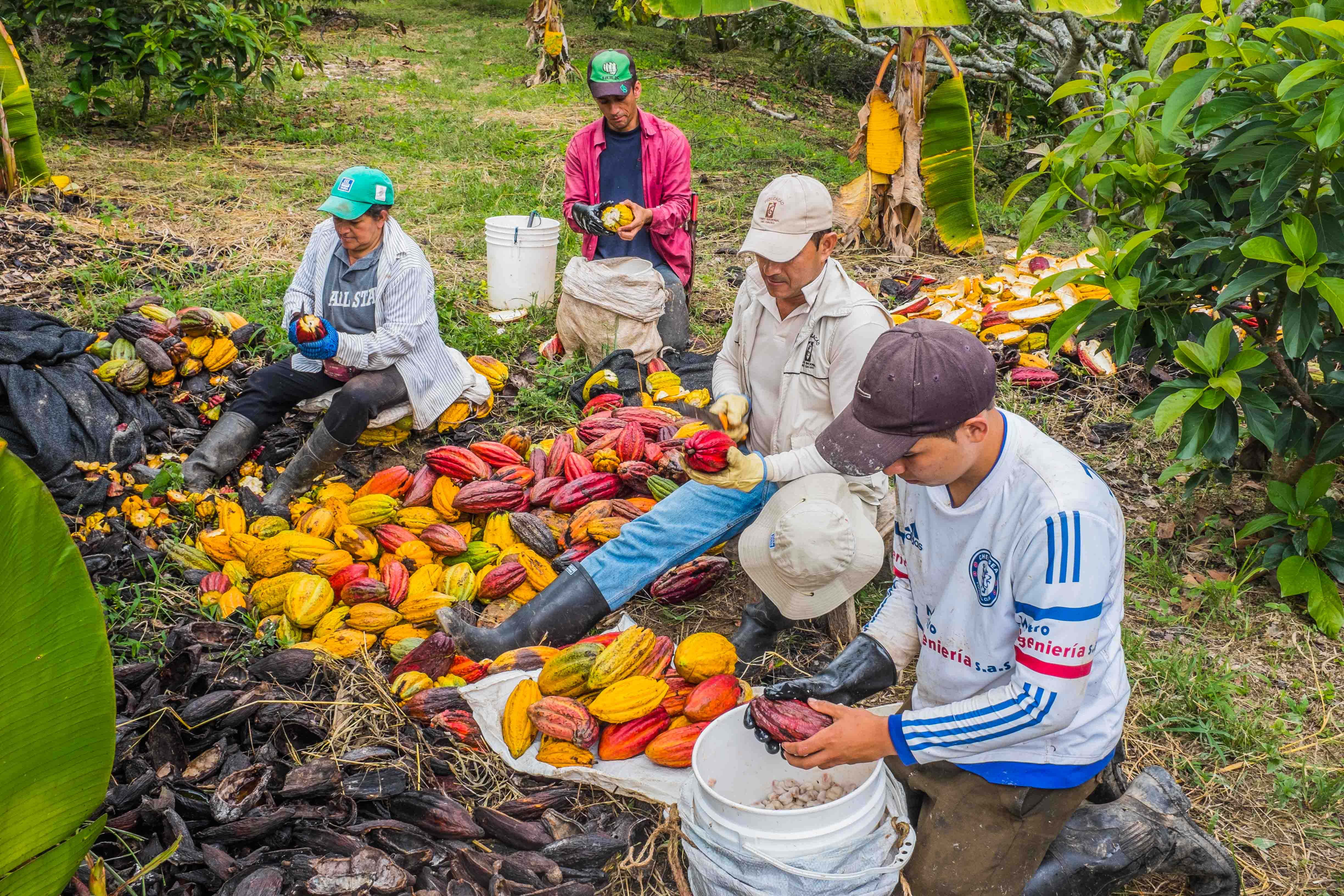
November 8, 2022, by Lexi Earl
Cocoa fermentations and chocolate flavours
During the first week of July, a team of researchers from the Future Food Beacon travelled down to London to join the Royal Society Summer Science festival. After a competitive selection process, endless organising, liaising with external suppliers, and sourcing cocoa saplings, we were finally ready to share our awesome research on cocoa fermentations with the public. Our exhibit, From tree to bar: A journey through chocolate, took visitors from the cocoa farm with its cocoa trees and pods to the fermentation box full of microbes, before allowing visitors to taste the final product: chocolate!

Dr Sally Eldeghaidy (left) and Elina Chrysanthou at the Royal Society exhibition stand on cocoa fermentations and chocolate flavour
Not many people know that chocolate is a fermented product. But the fermentation process is key to developing final flavours in the chocolates that we all know and love. However, cocoa fermentation is largely done on cocoa farms, and has been an uncontrolled, spontaneous process. Farmers will split the cocoa pods they harvest, revealing a sticky white pulp covering the cocoa beans. The pulp and beans are put into wooden fermentation boxes and left for five to seven days to ferment. During that time, microbes from the surrounding environment (from the boxes themselves, the beans and pulp, the pods, leaves, soils, and even workers’ hands) colonise the beans and start to break down unwanted compounds (like the acidity, astringency and bitterness that characterise the flavours of the unfermented beans) and introduce new flavours that we can then taste in finished chocolate bars – notes that include florals, nuts, red fruits, citrus, smoke, or caramel.

Cocoa fermentations at different stages of the process. Above, soon after harvest and below, before drying.
After fermentation, the beans are spread out to dry in the sun, before being bagged up and sent to a central distribution point. From there, cocoa beans are sold to chocolate makers, like Luisa’s Vegan Chocolates, who roast, grind, winnow, and conch the beans into chocolate liquor. From this liquor, the chocolate is tempered before bars are made.
Our research has been investigating different microbes present in the fermentations of three different farms from Colombia. Our researchers travelled to Colombia in 2019 to participate in the harvests, and, using Nanopore MinION hand-held DNA sequencers, took samples of the fermentations and the surrounding environments. This has generated a huge dataset of microbes which we are currently identifying. If we know which microbes are present in different fermentations, we will be able to work with farmers to help prevent fermentations from going badly, or from developing unwanted flavours. Eventually we might be able to work with farmers to develop specific flavours for chocolate makers too!

Chocolates made from Colombian cocoa beans
All this research was showcased through our Royal Society exhibition. There are four videos on You Tube that were featured at the exhibition: on cocoa farming, chocolate flavour, chocolate making, and chocolate and the brain. Our exhibition was well received by the public and we were featured in a number of news articles, including on BBC News, BBC Business, ITV, BBC Radio Nottingham, and BBC Radio 5. Our researchers worked incredibly hard throughout the week, talking to people, guiding them through chocolate tastings, and creating microbial prints.
We would like to thank the funders who made our participation at the Royal Society possible: BBSRC IAA, UoN Faculty of Science, Society of Applied Microbiology, Society for Experimental Biology, and the Future Food Beacon. Also thanks to the University of Reading for gifting us some of their cocoa saplings and pods, and to Luisa’s Vegan Chocolates for making all the samples and supporting us in the week!

No comments yet, fill out a comment to be the first

Leave a Reply